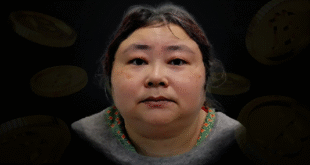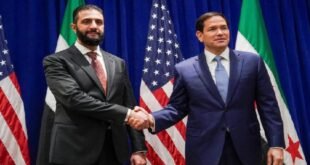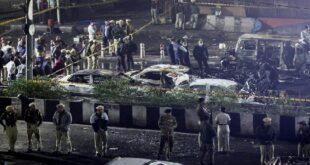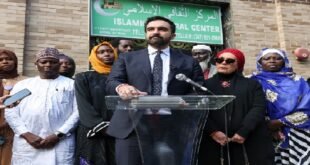16-07-2025
DAMASCUS/ BEIRUT: Clashes between Bedouin tribes, government forces and members of a minority sect in Syria have left dozens dead and once again raised fears of a breakdown in the country’s fragile postwar order.
The country is deeply divided as it tries to emerge from decades of dictatorship and nearly 14 years of civil war.
 Clashes have on several occasions broken out between forces loyal to the government and Druze fighters since the fall of President Bashar Assad in early December in a lightning rebel offensive led by Sunni Islamist insurgent groups but Monday’s fighting threatened to escalate into a larger conflict.
Clashes have on several occasions broken out between forces loyal to the government and Druze fighters since the fall of President Bashar Assad in early December in a lightning rebel offensive led by Sunni Islamist insurgent groups but Monday’s fighting threatened to escalate into a larger conflict.
Here are the main reasons the clashes expanded in recent days and background on the two sides:
The Druze and Syria’s new government
The Druze religious sect is a minority group that began as a 10th-century offshoot of Ismailism, a branch of Shiite Islam. More than half the roughly 1 million Druze worldwide live in Syria. Most of the other Druze live in Lebanon and Israel, including in the Golan Heights, which Israel captured from Syria in the 1967 Mideast War and annexed in 1981. In Syria, they largely live in the southern Sweida province and some suburbs of Damascus, mainly in Jaramana and Ashrafiyat Sahnaya to the south.
The transitional government has promised to include minorities, including the Druze, but the new 23-member government in Syria announced in late March only has one Druze member, Minister of Agriculture Amjad Badr.
Under the Assad family’s tight rule, religious freedom was guaranteed as the country then boasted about its secular and Arab nationalist system.
The Druze have been divided over how to deal with their issues with the new status quo in the country. Many Druze support a dialogue with the government while others want a more confrontational approach.
What lies behind the tension between the two sides?
 Syria’s religious and ethnic communities are worried about their place in Syria’s new system that is mostly run by Islamists, including some who have links to extremist groups.
Syria’s religious and ethnic communities are worried about their place in Syria’s new system that is mostly run by Islamists, including some who have links to extremist groups.
The country’s new President Ahmad al-Sharaa himself is a former militant who once was a member of al-Qaida. Although al-Sharaa had said that the right of ethnic and religious minorities will be protected, there have been several rounds of sectarian killings since Assad’s fall.
The Assad family rule that was dominated by members of the Alawite sect had oppressed much of the country’s Sunni majority while giving minorities some powers.
During Syria’s 14-year conflict, the Druze had their own militias, in part to defend against Muslim fundamentalist militants who consider them heretics. Members of the Islamic State group in 2018 attacked the Druze in Sweida province, killing more than 200 people and taking more than two dozen hostage.
Clashes began after checkpoint robbery
The Syrian Observatory for Human Rights, a UK-based war monitor, said the clashes started after members of a Bedouin tribe in Sweida province set up a checkpoint where they attacked and robbed a Druze man, leading to tit-for-tat attacks and kidnappings between the tribes and Druze armed groups.
Government security forces deployed to the area to restore order but were seen as taking the side of the Bedouin tribes against Druze factions.
Israel, which has periodically intervened or threatened to intervene in support of the Druze in Syria, said it struck military tanks in southern Syria Monday. In Israel, the Druze are seen as a loyal minority and often serve in the military. (Int’l News Desk)
 Pressmediaofindia
Pressmediaofindia




